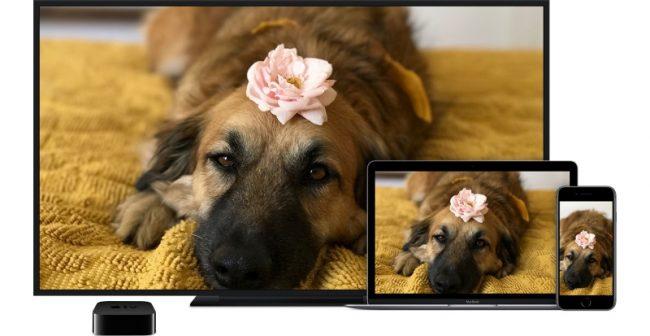Like music, films and series are increasingly consumed in dematerialized form. The trend has further intensified in recent years with the appearance of subscription streaming services such as Netflix, which have been added to classic VOD offers. Without forgetting the good old download, of course. Solutions that all have the advantage of allowing access to a lot of video content everywhere, from a smartphone, tablet or computer, but which can also be enjoyed on the big screen at home. It will obviously be easier on a Smart TV allowing the installation of dedicated applications, but it is not essential since it is also possible to broadcast video from your mobile devices easily and without even having to use any cables. . There are indeed several wireless solutions, which you can also use with a non-connected TV with the right accessories.
Miracast: the simplest, but not always the most effective
The most common wireless audio-video transmission solution is Miracast, since it is available on most devices equipped with Wi-Fi. And for good reason. Both technologies are developed by the Wi-Fi Alliance. It will therefore make it possible to connect a smartphone or a computer to a connected television, or not when it is connected to a box via the TV decoder of an Internet service provider. HDMI dongles are also available. It is also quite simple to implement. Once the devices are connected to the same Wi-Fi network, for example on Android, activate screen sharing in the settings, select the target TV (or the Wi-Fi box doing the relay) from the list available devices and accept the request on it.
Widespread and therefore easy to use, Miracast also has some disadvantages. The most important thing is that it will only allow, with most devices, to duplicate the display of one screen on another. Hence its name, which naturally evokes the mirror effect. Understand that absolutely everything you do on the source device appears on the second screen. It will therefore be inaccessible during the entire cinema session. However, additional options are offered on Windows, for example, such as the extension of the screen which will allow independent use of the two screens. The quality can also leave something to be desired, with audio delays that can add to pixelated images, even if the standard improves on this point.
AirPlay: the only option for owners of iOS and macOS devices

As often, Apple customers will have to rely on a proprietary solution to cast video content easily from an iPhone, iPad or Mac to a TV. It is also the same as for music: AirPlay. Also operating in Wi-Fi, it allows like the Miracast to duplicate the screen of the source device. Apple nevertheless also adds the possibility, on iOS, of broadcasting only a video stream without parasitic elements such as menus and playback controls, and thus makes its solution a little more convenient. Especially since the implementation is also very simple. The screenshot is available in the control center on iOS and in the menu bar on macOS, while it will be enough to click on the AirPlay icon in the compatible applications on iOS, like the native player or YouTube, to broadcast a single video.
© Apple
Generally also delivering a higher quality than that obtained with Miracast, Apple's solution is not, however, flawless. She even has a big one. AirPlay is not supported natively by any television and it will almost necessarily be necessary to invest in an Apple TV to take advantage of it, unless you receive internet via Free. The Internet service provider indeed offers compatibility with AirPlay on its Freebox and Freebox Player.
Google Cast: not-quite-local streaming
Google also offers an in-house solution, with the difference, however, that his was not designed for local broadcasting. Google Cast, its name, is based on Wi-Fi and allows you to connect a device (smartphone/tablet with Google Home application, or PC/Mac with Chrome) to a screen to broadcast video content on it – or to a enclosure to broadcast music - but the flow does not necessarily pass from one to the other. It is actually retrieved directly from the servers of the streaming services when they are compatible and this is its primary function, even if Google ended up adding the screenshot in the Google Home application for the distribution of content stored on a smartphone. It is also working on a similar feature with Chrome for computers.
To return to the primary function of Google Cast, it should be noted that the compatible services are more and more numerous (you will find the complete list here), and that it has some significant advantages. First of all, retrieving the stream directly from the Internet frees up the source device during the broadcast, since it is practically only used to start playback from the start via the dedicated button integrated into the applications. It also allows you to enjoy good audio and video quality, and even 4K, with a solid connection. However, there is also a small constraint here. It is generally necessary to invest in a Chromecast to take advantage of it, unless you have a television or a box (such as Shield TV or decoder) under Android TV.
